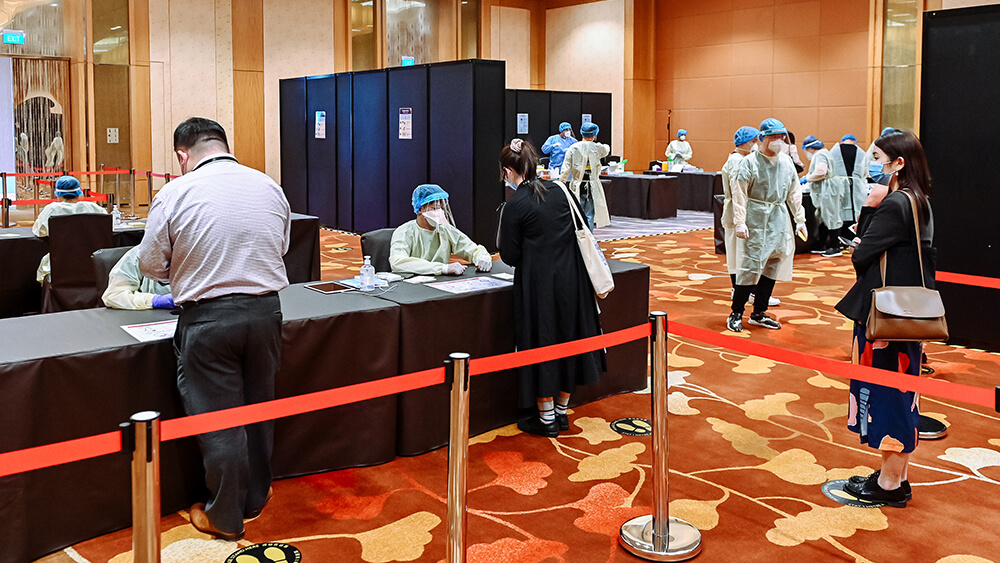
A year after the COVID-19 swept across the globe, the business events industry is seeing signs of recovery, but with extra costs such as rapid testing and other safety measures at in-person events.
A slightly higher percentage of planners and suppliers described feeling exhausted and burned out in the February Dashboard survey than in January’s survey, but we can probably chalk that up to yet another month of enduring the COVID crisis — we’re coming up on a year now since the lockdowns began. And some especially harsh winter weather during February in much of the U.S. likely didn’t help the situation feel less interminable for the 704 survey participants (458 planners and 246 suppliers). But other results suggest that respondents are finding the return of in-person events easier to see on the horizon.
This time around, planners are feeling significantly more hopeful than suppliers — and a larger percentage of planners said they were hopeful than last month (54 percent vs. 48 percent in January). Planners are also feeling less anxious about the future — 31 percent compared to 35 percent the month before. Meanwhile, there hasn’t been a big shift in the mood of suppliers month over month.
There are some telling differences between planners and suppliers when it comes to their focus on reskilling. Both are placing more of a priority on designing live experiences in physical environments: 71 percent of planners vs. 66 percent in January, and 39 percent of suppliers vs. 35 percent in January. But suppliers are also setting their sights on designing digital experiences: 41 percent in February vs. 36 percent in the prior month identified that as a skill they are developing. A slightly greater percent of suppliers is focusing on their soft skills and developing sales and marketing approaches best suited to a post COVID-19 world, but the biggest jump is the percentage of suppliers who are working on developing new business models — 7-percentage points above the prior month.
How We’ll Move Forward
In terms of a recovery scenario, planners and suppliers again seem to see things somewhat differently. In February, planners’ responses seemed to reflect a shift in thinking: One-third versus 26 percent in January said they think local and regional events will thrive, and a smaller percentage — 18 percent compared to 24 percent — think the most likely scenario will be small in-person events that are hybrid, with a digital version for a larger audience. That more are planning face-to-face events is also reflected in what planners identify as their main financial challenges: Fourteen percent vs. 8 percent in January said it was expenses related to enhanced hygiene/sanitary standards at in-person events. There’s a corresponding downturn in budgeting for hybrid events — 38 percent cited that as a major challenge compared to 44 percent in January.
Suppliers envisioned the opposite scenario this time, with 30 percent vs. 17 percent in January seeing hybrid as the way forward. And the percentage of suppliers who expect there to be a pent-up demand to meet face-to-face also went down, from 22 percent in January to 16 percent in February, while there was a slight uptick among planners who think there will be a pent-up demand for in-person events.
At the same time, as more people are getting vaccinated, 68 percent (compared to 63 percent in January) of suppliers said that is changing their thinking about what is possible and 12 percent of planners (vs. 10 percent in January) are initiating booking event space in light of the vaccinations. But there was less of an interest month over month from both planners and suppliers in requiring proof of vaccinations in order to attend face-to-face events: 31 percent vs. 39 percent of planners and 34 percent vs. 39 percent of suppliers.
The severe economic and job-market impact of COVID is more evident among suppliers in the February survey, with 28 percent vs. 21 percent in the January survey seeing 2021 revenue declines of greater than 75 percent. And their goals for joining community groups online have shifted: Twenty-three percent vs. 10 percent in January are looking for jobs and 34 percent vs. 19 percent are seeking help with reskilling. There is also less of a desire to share ideas, with 84 percent compared to 94 percent citing that as their reason for joining.
When it comes to their own appetite to travel to face-to-face events, both planners and suppliers indicate a greater willingness in February than January. Only 34 percent vs. 44 percent of planners said they would not travel. And 30 percent vs. 25 percent of planners and 37 percent vs. 31 percent of suppliers said they would go any distance if the program was worth it.
We asked a new question in February: If you are planning an in-person or hybrid event in 2021, what kind of overall registration numbers are you expecting compared to the same 2019 event? Nearly one-third expect declines of at least or greater than 50 percent. But the majority of responses reflect that while planners may think we’re getting closer to holding in-person events, they recognize that the COVID situation remains fluid. Fifty-three percent said they are unable to estimate attendance until they get closer to their scheduled event date.
Michelle Russell is editor in chief of Convene.
Please download a PDF of the full February Recovery Dashboard results by clicking the link below.
Previous Recovery Dashboard Results
Find all the past results on our Recovery Dashboard archive page.
